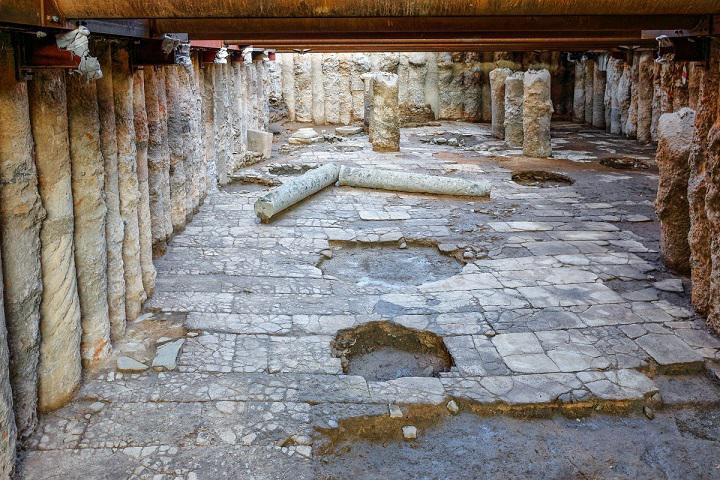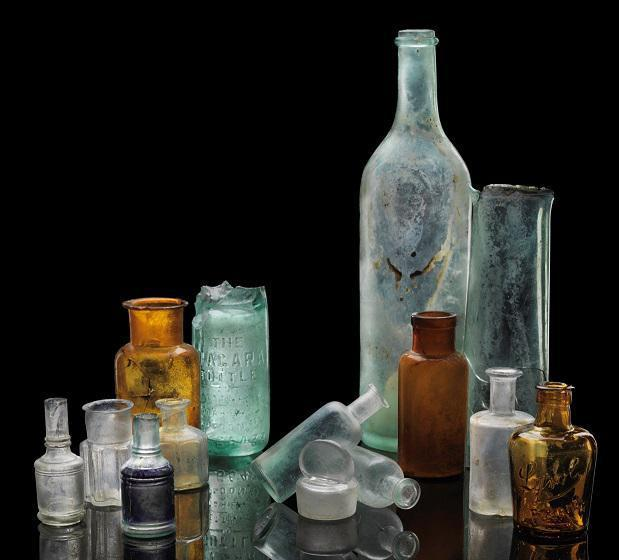While building the metro system in Thessaloniki, something extraordinary was uncovered: an entire ancient city beneath the modern one. What was initially a major infrastructure project has become one of the most significant archaeological discoveries in recent European history.
A True Treasure Beneath Our Feet
In any other European city, an archaeological trove like this would be a source of immense pride and prosperity. The “subterranean city” beneath Thessaloniki is a Byzantine Pompeii—an open window into the ancient soul of the city.
In most places, development projects like a metro would start with one non-negotiable: preserving and showcasing such treasures. And yet, Thessaloniki has long struggled to reconcile its historical wealth with modern development.
A Troubled History of Preservation
Back in 1966, the Roman Agora (Forum) was nearly lost to urban planning. The city had approved plans to build a courthouse complex right on top of the ancient site. Thankfully, the then-antiquities curator, Fotis Petsas, defied opposition and restored the only surviving column. His courage impressed both citizens and officials, ultimately saving the site.
Similarly, in 1969, the area was declared an archaeological zone, preserving the Roman Forum for future generations.
There was even a time when the city council considered demolishing the White Tower—now Thessaloniki's most iconic monument. It was spared, ironically, only because the demolition cost was too high.
Yet even today, we see remnants of neglect. The Temple of Aphrodite, a one-of-a-kind discovery, remains buried and abandoned under rubble on Antigonidon Street. This is Thessaloniki’s Parthenon, still waiting for recognition.
Metro Meets Antiquity
The construction of the Thessaloniki Metro has brought to light an extraordinary range of finds—over 300,000 movable artifacts and multiple open excavation sites. In a public event titled "Antiquities and the Metro", the city’s Ephorate of Antiquities and Attiko Metro S.A. showcased these discoveries at the Ancient Agora.
Here are some of the highlights from this remarkable archaeological journey:
1. Pre-Cassandrian Settlement and a Roman Cemetery (Pylaia Depot and Fleming Station)
During 2012 excavations at the Pylaia depot, archaeologists uncovered a well-planned ancient settlement dating to the 4th century BCE—before the official founding of Thessaloniki by Cassander in 315 BCE. The town followed the Hippodamian grid system, similar to other major Macedonian cities like Olynthus and Pella, and thrived until its abrupt abandonment.
Nearby, a Roman-era cemetery (2nd–4th century CE) was found near Fleming Station, revealing unknown aspects of settlement life on the city's fringes.
2. The Eastern Necropolis (Syntrivani Station)
Excavations near Syntrivani, Track Interchange, and University stations uncovered part of Thessaloniki’s eastern necropolis and a three-aisled funerary basilica. Over 3,000 tombs were revealed—spanning from the Hellenistic period to Late Antiquity—complete with offerings like clay figurines, gold and silver jewelry, and coins.
One remarkable find: a golden funerary wreath from the late 4th to early 3rd century BCE.
3. Urban Planning from Foundation to Late Antiquity (Agia Sofia and Venizelou Stations)
In the city’s historical heart, stations at Agia Sofia and Venizelou revealed the ancient road network and infrastructure along modern-day Egnatia Street. These findings trace Thessaloniki’s development from its foundation through the Roman and Byzantine periods.
Highlights include marble-paved roads, grand colonnades, luxurious mosaics, decorative fountains (nymphaea), and a well-preserved decumanus maximus—testament to the city’s urban sophistication.
4. From Byzantine Marketplaces to the Fire of 1917
Beneath the Byzantine Avenue, the archaeological layers expose a vibrant commercial hub. Markets, workshops, and shops produced jewelry, metalwork, glassware, and ceramics.
Later Ottoman-era modifications were limited, but the 1917 fire dramatically reshaped the city. Archaeologists discovered remnants of that destruction—including pharmacy bottles and underground structures—offering a sobering glimpse into the city's transition into the modern era.
5. The Western Necropolis and the City's Outskirts (Dimokratias Station, Stavroupoli Junction, and New Railway Station)
On the city’s western outskirts, excavation between 2009–2017 unearthed burial grounds dating from the 3rd century BCE to the 6th century CE. These cemeteries, aligned along the ancient Roman Via Egnatia, featured marble sarcophagi, altar-like monuments, and early Christian churches with auxiliary buildings.
Artifacts from these areas include figurines, jewelry, bronze vessels, and temple architecture, providing a comprehensive picture of religious and funerary practices over centuries.
A Legacy Worth Preserving
This isn't just about a metro system—it's about Thessaloniki’s identity, legacy, and future. Solutions do exist to harmonize infrastructure with preservation. Other European cities have done it. If necessary, let's seek expertise and cooperation. Because what we have here is more than stones—it’s the history of civilizations layered beneath our feet.
Respecting our past isn't optional. It's our duty.





















